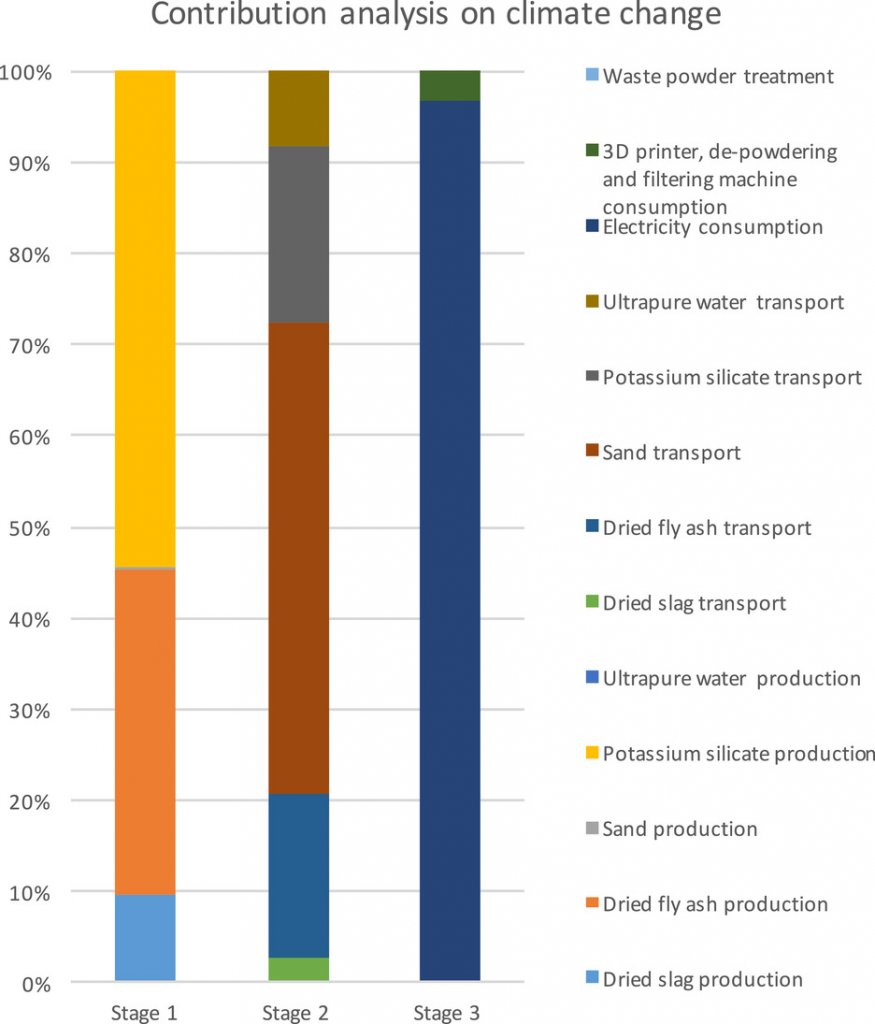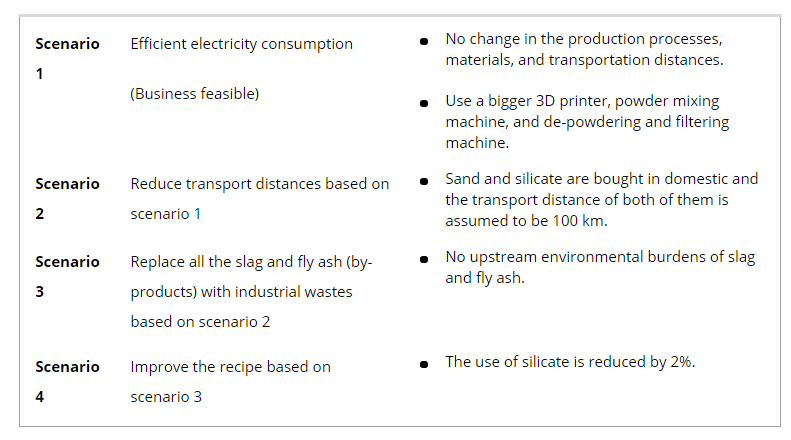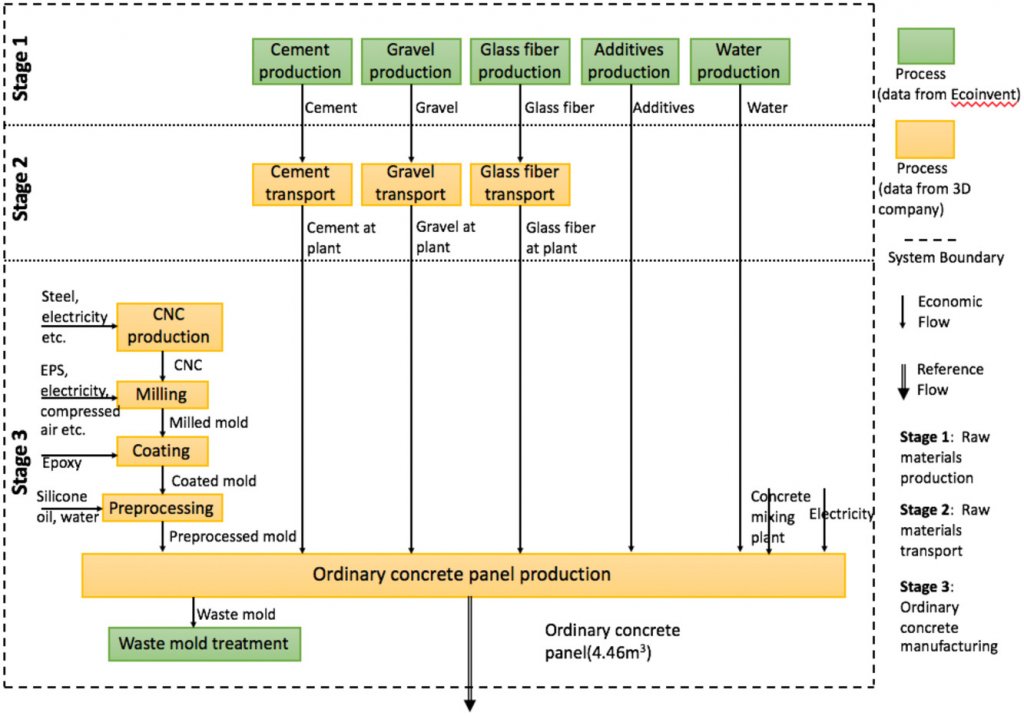Researchers from The Netherlands are exploring further potential for 3D printing with concrete, outlining their findings in the recently published ‘Life cycle assessment of 3D printing geo-polymer concrete: An ex-ante study.’ As both 3D printing and geo-polymers become attractive ventures to those involved in construction, areas such as Portland are working to replace ordinary cement for environmental purposes, decreasing use of materials and the amount of waste created.
Four types of mold cores were used in a previous study relied on by the researchers, offering a mixture of samples created through 3D printing and more traditional techniques. The molds fabricated via 3D printing demonstrated better environmental performance. For this research, the team was centered around continuing to study environmental systems analysis as compared to previous work—but especially in developing new scenarios too related to the ex-ante framework.
“We involved technology developers in the research process and discussed with them the potential future technological landscape, potential market penetration, and thus the future commercial data and the feasibility of the scenarios,” stated the researchers.
Life-cycle assessment (LCA) is typically used in assessing environmental impacts for existing ‘product or service systems,’ while ex-ante LCA is used for novel product systems before they are put into action.
For 3D printed geo-polymers, powder and binding materials are key in concrete production, requiring slag, fly ash, and sand. Powder is layered, and then silicate water additives are combined and mixed in, with the binding liquid then extruded in the 3D printer. The researchers analyzed the three phases of the system, from production of raw materials to transport to concrete manufacturing.
“The analysis is based on the impact scores after characterization for all of the impact categories considered in the assessment,” stated the researchers.

Contribution analysis on climate change. Underlying data used to create this figure can be found in supporting information.
The researchers point out impact hotspots as:
- Electricity for 3D printing
- Long transport distances
- Manufacturing of silicate
Four scenarios were created to improve hotspots. See the table below.
The researchers also worked to define environmental profiles of geo-polymer production for commercial use, and for technology they also included the typical raw materials such as cement, gravel, glass fiber, additives, and more.
“We assumed that the technological improvements necessary to meet the conditions of the four defined scenarios would potentially happen without interference with the background processes obtained from standard LCA databases and the literature. Therefore, the impact of changes on the lab scale 3DGP technology would only influence the foreground system,” stated the researchers.
They also evaluated the technology over time, regarding three scenarios for improvement.

Comparative characterization results in four scenarios. Underlying data used to create this figure can be found in supporting information
“The results of the ex‐ante LCA study here presented show some discrepancies with previous 3D printing studies. This is mainly due to the different raw materials assessed in combination with 3D printing technologies,” concluded the researchers. “In the case here presented, one raw material in the recipe, namely the silicate, has considerable impacts on the manufacturing processes, leading to higher results compared to that of the ordinary raw materials in 3D printing.
“3DGP concrete does not have an advantage over ordinary concrete from the perspective of the transportation of raw materials. For ordinary concrete, the supply of raw materials operates at full commercial scale, due to the mature nature of the market. The transportation distances of raw materials are not long for ordinary concrete. These aspects do leave still little room for improvements and rationalization in the use of resources.”
3D printing is trending these days not only in allowing for rapid construction of homes and offices (even cars), but also in materials science as concrete is researched in other projects too from creating innovative reinforcements to optimizing parameters, and even self-healing capsules.
What do you think of this news? Let us know your thoughts! Join the discussion of this and other 3D printing topics at 3DPrintBoard.com.
[Source / Images: ‘Life cycle assessment of 3D printing geo-polymer concrete: An ex-ante study’]Subscribe to Our Email Newsletter
Stay up-to-date on all the latest news from the 3D printing industry and receive information and offers from third party vendors.
You May Also Like
3D Printing Financials: Fathom Struggles in Financial Quicksand During Critical Transition
Facing a year of key transitions and financial pressures, Fathom (Nasdaq: FTHM) has filed its annual report for 2023 with the U.S. Securities and Exchange Commission (SEC). The document outlines...
Latest Earnings Overview for Australian 3D Printing Firms Titomic and AML3D
Australian 3D printing manufacturing firms Titomic (ASX: TTT) and AML3D (ASX: AL3) reported their financial results for the period from July to December 2023, marking the first half of their...
3D Printing Webinar and Event Roundup: April 7, 2024
Webinars and events in the 3D printing industry are picking back up this week! Sea-Air-Space is coming to Maryland, and SAE International is sponsoring a 3D Systems webinar about 3D...
3D Printing Financials: Unpacking Farsoon and BLT’s 2023 Performance
In the Chinese 3D printing industry, two companies, Farsoon (SHA: 688433) and Bright Laser Technologies, or BLT (SHA: 688333), have recently unveiled their full-year earnings for 2023. Farsoon reported increases...


































